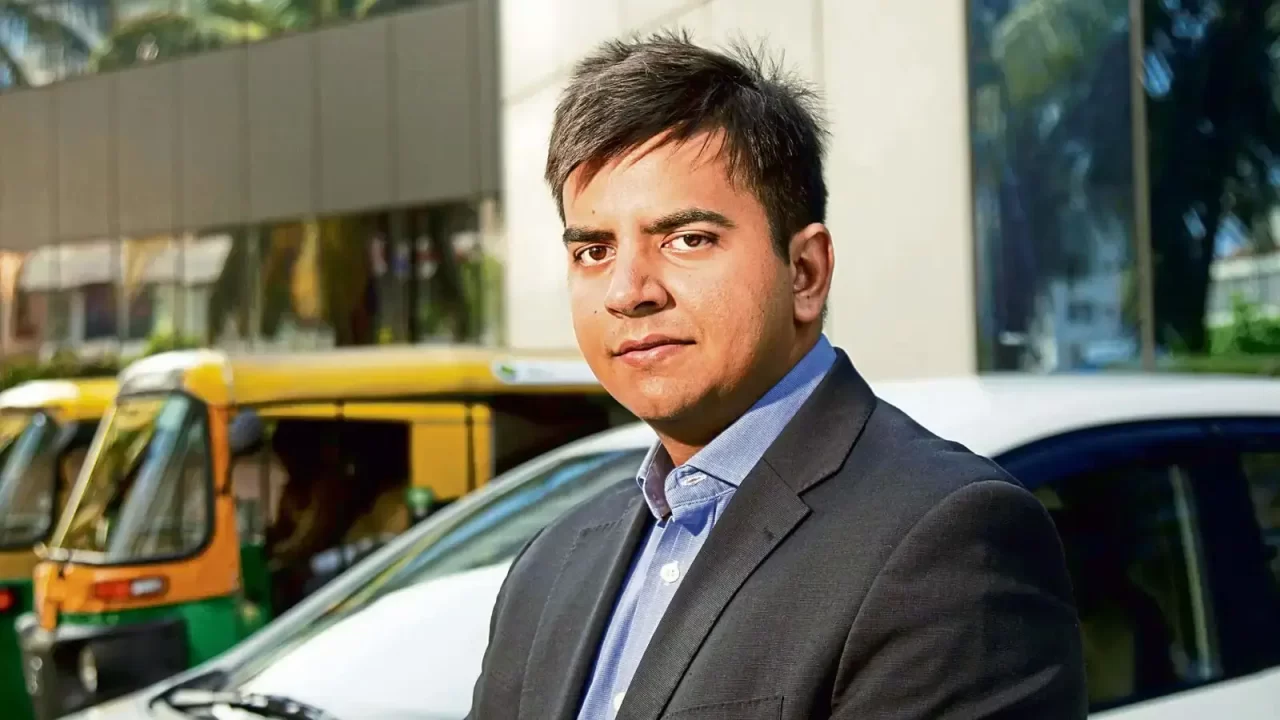Top 7 Reasons Not To Buy Ola Electric’s Impending IPO, The ‘Fiery’ Hazards And The Risks Behind Ola Electric’s IPO
Ola Electric is gearing up to enter the public markets with its Initial Public Offering (IPO). The buzz surrounding the Initial Public Offering (IPO) is undeniable, fueled by the prospect of a first-of-its-kind pure-play EV maker entering the stock exchange. However, a careful examination of Ola Electric's Draft Red Herring Paper (DRHP) reveals several red flags that potential investors should consider and perhaps stay away from this 'fiery debut'. Also, a point to consider is that there is already an advancement in technology wherein Toyota is producing hydrogen-run cars; hence, what is the future investment potential of EVs and Ola Electric?

The Indian IPO market is set to witness a groundbreaking moment as Ola Electric, Tesla of the East, Electric Vehicle (EV) maker, prepares to embark on its maiden journey into the public markets – the market enthusiasm surrounding the Initial Public Offering (IPO) is undeniable, fueled by the prospect of a first-of-its-kind pure-play EV maker entering the stock exchange.
However, beneath the veneer of anticipation, looking into Ola Electric’s Draft Red Herring Paper (DRHP) indicates complex challenges and should come with a disclaimer: ‘buy it at your own risk’.
A discerning examination of the DRHP reveals a mosaic of cautionary tales -from the intricate details of the offering to the broader risk factors that could influence the company’s trajectory; our analysis aims to illuminate the path fraught with uncertainties and challenges that potential investors may encounter.
A combination of fresh issues delineates the contours of Ola Electric’s IPO and offers for sale, with founder Bhavish Aggarwal and key investors divesting substantial stakes. At the same time, the monumental size of the IPO, totalling Rs 7,250 crore, beckons investors with promises of growth and innovation.
Yet, as the DRHP unravels, so too do the intricacies of Ola Electric’s intentions, priorities, and the inherent risks that accompany its foray into the public domain.

At the heart of the matter lies the fundamental question of how Ola Electric intends to wield the substantial funds garnered through the IPO.
With a magnifying glass on Research and Development (R&D), capital expenses, and debt repayment, the company’s strategic decisions reveal a delicate dance between ambition and prudence.
However, as we delve deeper, the shadow of uncertainty looms over the returns on these investments, casting a pall over the company’s future.
The portrayal takes a dramatic turn as Ola Electric unfurls its internal risk factors, from the reduction of government incentives to the precarious dance with profitability; the DRHP outlines a terrain where unforeseen challenges could tilt the balance.

The spotlight on Bhavish Aggarwal’s multifaceted involvement in various ventures introduces an element of conflict that demands careful consideration.
The high attrition rates are not because there is a dearth of sector-related skilled labour but because the company’s toxic environment leads to high attrition rates; thus a harbinger of potential instability, furthering the fragility of the company’s human capital.
The negative aspects gain depth as we further explore the intricacies of Ola Electric’s board, remuneration structure, and the regulatory microscope that it finds itself under.
The litany of legal proceedings and financial metrics, including losses and net worth, add nuance to the understanding of the risks embedded in this high-stakes IPO.
Thus, our critical analysis seeks to peel back the layers surrounding Ola Electric’s IPO, offering prospective investors a panoramic view of the challenges that lurk beneath the surface.
As the financial world awaits the unfolding drama, it is imperative to approach this investment opportunity with eyes wide open, aware of the risks that may shape the destiny of Ola Electric in the public arena.

1. Promoter’s Conflict of Interest
One of the primary concerns highlighted in the DRHP is the significant concentration of Ola Electric’s founder, Bhavish Aggarwal, on multiple other businesses.
Aggarwal’s roles as Chairman and Managing Director of Ola Electric, along with his involvement in ANI Technologies Private Limited and Krutrim SI Designs Private Limited, raise questions about his ability to dedicate sufficient time/efforts to Ola Electric.
Moreover, Aggarwal’s association with Tork Motors Private Limited, a competitor in the same industry, introduces the potential for conflicts of interest, which could adversely impact Ola Electric’s operations.
Considering that Ola Electric’s Two-wheelers have garnered many headlines related to fire incidents, service-related issues, and much more, and the complete lack of accountability from Bhavish Aggarwal is enough to illustrate the significance of the above points.
2. Mounting Losses and Profitability Risks
Ola Electric reported substantial losses in its financial statements, with a net loss of Rs 1,472 crore in the financial year ended March 2023.
For the three months ended June 30, 2023, or the first quarter of FY24, Ola Electric reported a total income of Rs 1,272 crore. However, for the three- month period, the firm’s losses were recorded at Rs 267 crore. Ola Electric has a net worth of Rs 2,111 crore as of June 30, 2023.
The company’s operating loss or EBITDA loss came in at Rs 1,197 crore in FY23 as against Rs 715 crore it reported in FY22. For the Q1 of FY24, the firm has reported a loss of Rs 183 crore.
The DRHP acknowledges the possibility of continued operating losses during the expansion phase in both domestic and international markets; thus, it presents a significant risk for investors who may face uncertainties regarding the company’s path to profitability and sustainability.
Also, the market of EVs is itself questionable as new advancements in technology have already come to the forefront; as mentioned before, Toyota has already introduced hydrogen-run cars.
This is a crucial aspect to consider because, in India, the infrastructure to support EV-run vehicles is yet to be established, particularly outside of metro cities; on the other hand, the infrastructure for running CNG vehicles is robust and can be utilised for hydrogen-run cars.
Hence, what is the future of EVs in India, unlike in the United States, where Tesla has been used for years and has established a robust infrastructure already?

3. Soaring Attrition Rates
The DRHP reveals a concerning attrition rate of 42.06% in the seven-month period ended October 31, 2023, and 47.48% in Fiscal 2023.
High employee turnover can disrupt operations, hinder innovation, and increase recruitment costs.
However, the point to consider here is that it is not only because the EV market relies heavily on research and development and loss of skilled talent could impact the company’s ability to innovate and stay competitive – but because there have been numerous reports of the ‘toxic work culture’ at Ola Electric primarily because of Bhavish Aggarwal’s leadership style.
4. Regulatory and Subsidy Dependency
The reduction in government incentives, such as the FAME subsidy, poses a significant risk to Ola Electric’s business model.
The DRHP highlights the adverse impact of subsidy reductions on the purchase cost of electric vehicles, leading to a decline in customer demand.
Hence, the company’s vulnerability to government policy and subsidy changes highlights the regulatory risks associated with investing in Ola Electric.
5. Litigations and Enforcement Directorate Scrutiny
Ola Electric is currently under the scrutiny of the Enforcement Directorate (ED) in connection with a copyright infringement case.
More importantly, there are pending legal proceedings involving the non-delivery of vehicles, cancellation issues, and defective products, which raise concerns about the company’s adherence to legal and ethical standards.
Thus, investors should carefully assess the potential financial implications and reputational risks associated with these litigations.

6. Board Composition and Remuneration
The composition of Ola Electric’s board raises questions about independence and potential conflicts of interest. Non-executive directors with ties to ANI Technologies and other firms may influence decision-making processes.
Additionally, the remuneration structure, including the substantial pay to the founder and sitting fees, may be perceived as excessive and could impact shareholder value.
Take a look – Aggarwal will be receiving a base salary of Rs 6 crore per annum with a variable pay of Rs 3 crore per annum. Remuneration to non-executive and independent directors will be Rs 0.5 crores per annum, along with sitting fees of Rs 1 lakh.
7. Utilization of IPO Proceeds
While the company outlines the utilization of IPO proceeds for capital expenses and Research and Development, there is no guarantee of returns on these investments.
Also, the R&D should be done before coming out with a product, not after,
the lack of assured returns raises concerns about the effectiveness of Ola Electric’s strategic allocation of funds and the potential for wasteful expenditures.
The Viewpoint – A Call for Prudent Consideration
As the company sets the stage to become the first pure-play Electric Vehicle (EV) maker to embrace the public markets, investors stand at a crossroads, lured by the potential for transformative growth yet shrouded in the shadows of uncertainty.
The journey through Ola Electric’s Draft Red Herring Paper (DRHP) has illuminated a spectrum of concerns that merit careful consideration – from the founder’s multifaceted engagements introducing the possibility of conflict to the precarious question of profitability amid mounting losses, the picture is fraught with complexities.
As investors weigh the merits of this high-stakes venture, the utilization of IPO proceeds emerges as a critical juncture.
The strategic allocation of funds for Research and Development (R&D), capital expenses, and debt repayment carries the promise of innovation but is juxtaposed against the absence of assured returns, evolving market dynamics, and changing technologies.
The internal risk factors, regulatory scrutiny, and litigations add layers of uncertainty that require meticulous consideration.
The composition of Ola Electric’s board, remuneration structures, and the overarching vision for growth introduce governance and strategic direction elements.
Similarly, the litany of legal proceedings and financial metrics, including losses and net worth, adds nuance to the understanding of the risks embedded in this investment opportunity.

The Last Bit, the Ola Electric IPO, while generating significant interest, raises several critical concerns for potential investors.
From the promoter’s conflicting interests to mounting losses, high attrition rates, regulatory dependencies, legal scrutiny, and governance issues, investors must carefully weigh the risks against potential returns. Prospective investors should approach Ola Electric’s IPO with a discerning eye and a judicious mindset.
While the allure of being part of a pioneering force in the EV sector is undeniable, the risks outlined in the DRHP serve as cautionary signals.
Prudent due diligence and a thorough understanding of the underlying challenges are imperative before considering investing in ‘Fiery’ Ola Electric’s IPO.




